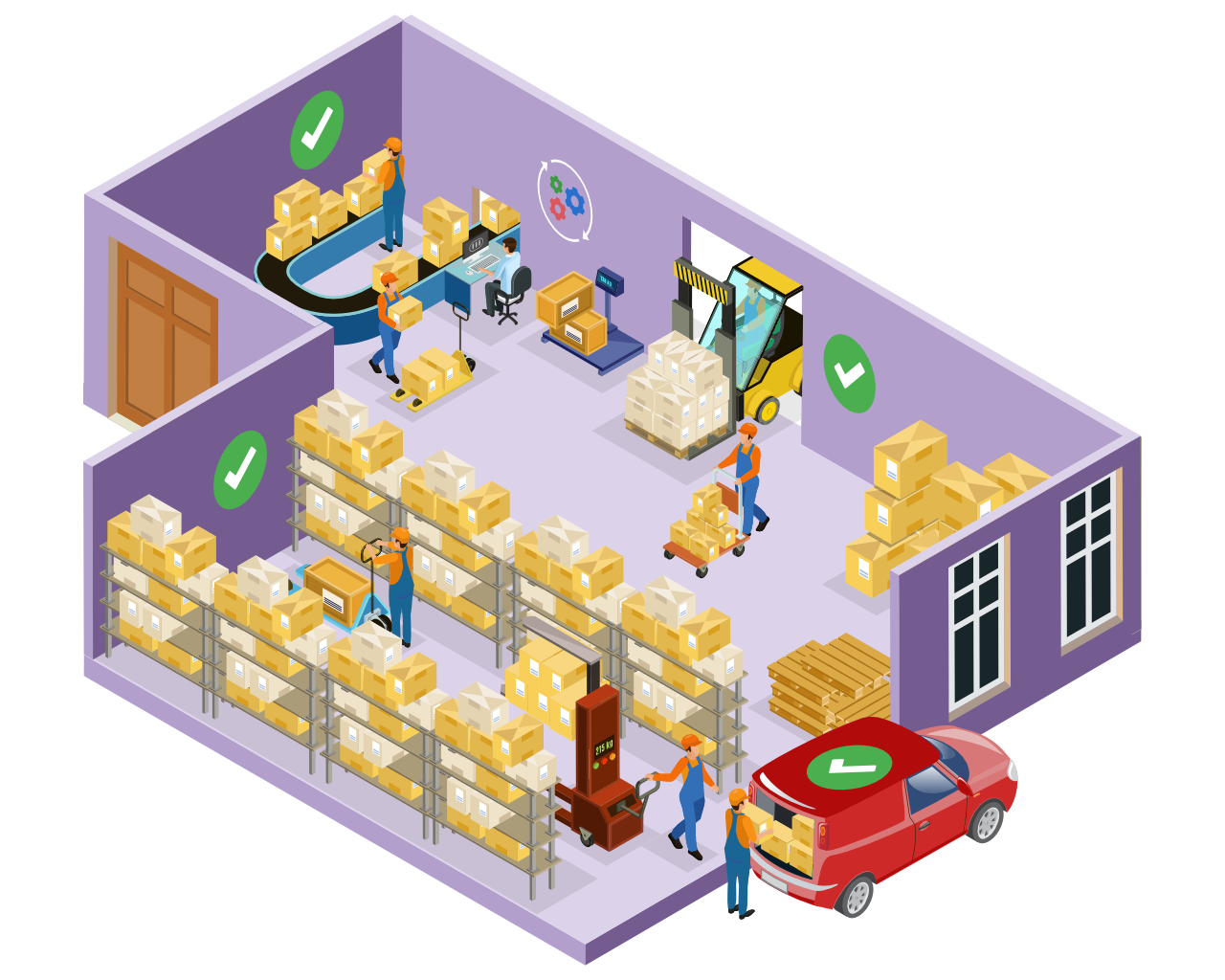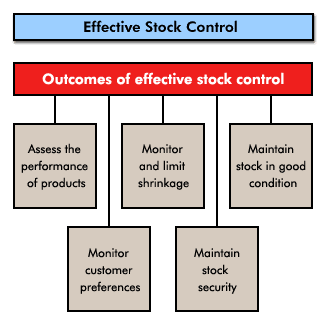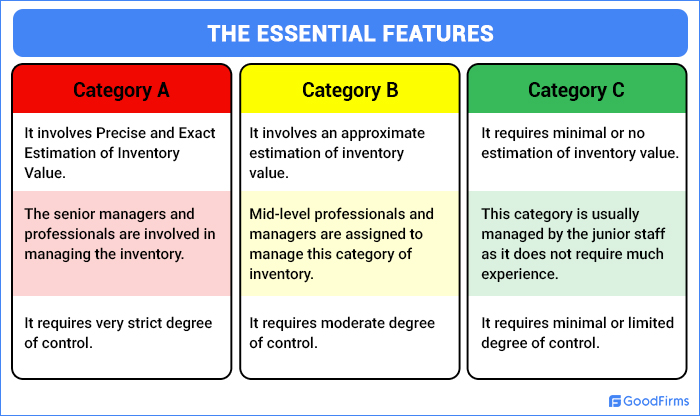Managing inventory is becoming more and more challenging as your business grows, what used to be one shelf of products, might grow to a storage room full of products and then to a warehouse packed full of SKUs.
And with the growing number of products or materials in your storage certain changes and practices need to be introduced to effectively manage inventory and run the business.
And that’s what we will discuss here, how you can effectively manage and optimize your inventory.
What is Inventory Optimization?
Inventory Optimization is a combination of practices, strategies, and technologies for maintaining the right amount of inventory required to meet the demand for production, logistics, and customer demand to avoid common inventory issues such as stockouts, overstocking, and backorders.
This means using as less as your capital for purchasing inventory in order to maintain your demand and supply chain and minimize any costs occurred by badly managed inventory and maximize profit.
Inventory optimization is an essential step of every inventory management and warehouse management process. Your goal is to balance investment constraints against business objectives and fulfillment targets across a variety of inventory stock-keeping units (SKUs).
What is Inventory Optimization in Supply Chain?
Supply Chain Inventory Optimization is a process to maintain the right amount of stock and balance the manufacturer’s capital investment constraints and goals in order to keep the production running, satisfy the customer demand and minimize any costs of storing and managing a large assortment of stock-keeping units (SKUs).
It includes all the inventory management best practices, techniques, and software that helps manufacturers improve their profitability and minimize the risk and cost of inventory.
It is arguably one of the most important steps for supply and warehouse managers to undertake to achieve a holistic view of inventory and make better demand forecasting and purchase decisions.
Inventory optimization can help you easily overcome warehouse management and stocking problems with reduced inventory.
For example, 34 percent of businesses have shipped an order late because they inadvertently sold a product that was not in stock and the worldwide cost of inventory distortion (including shrinkage, stockouts, and overstock) is an estimated $1.1 Trillion.
And inventory optimization can help you solve such problems and optimize your operational efficiency and profitability.
Why is Inventory Optimization Important?
Optimizing your inventory can enable you to have the right amount of inventory and decrease the amount of capital being used for production and operation while improving customer experiences. It allows you to correctly forecast the customer demand and deliver on what consumers want and, in the time, they want it in without holding too much inventory.
And regardless of the type of your business and size, inventory optimization has many benefits and there are key reasons why inventory optimization is so important for your business:
1. Lower Costs and Improve Finances
Inventory optimization helps you to significantly reduce costs and improve your finances by slashing supplier lead time and improving your relationship with the right suppliers which in order will improve your bottom line.
It will also help you to get rid of obsolete inventory that is dusting on your shelves and taking up space. With inventory optimization, you can remove those from your inventory to get additional space for more important stock.
Of course, inventory optimization also includes making sure you are using the right software. Proper WMS or Inventory Management Solutions will help you speed up processes, increase productivity and reduce errors which will result in lowering OPEX and saving your money.
And of course, it helps you to invest money into the right stock and the right amount so you don’t tie up too much of your cash into inventory.
2. Improve Customer Service
By properly optimizing your inventory, you will be able to improve your customer service. You can increase your fulfillment times which heavily relies on effective inventory control and efficient warehouse operations to reduce your order fulfillment time.
You will also be able to better predict any seasonality items and ensure you have enough stock when the season comes and less of it when it goes. You want to have popular seasonal merchandise in stock and ready to go and be gone by end of the season.
And of course, your returns can improve from the processes to allow customers easily ship back your items to reduce the return rate by providing items in the right conditions.
Inventory optimization is an essential step to delight your customers and minimizes any risk of sending faulty or incorrect items to your customers which will result in happy customers.
3. Improve Employee Productivity
Inventory optimization will also help you identify any issues and challenges your employees are experiencing whether it is ordering or reordering new stock, handling or storing inventory to shipping inventory to your customers.
Helping your employees to do more with less will help with reducing stress when busy times come. It will also reduce any human errors during busy periods which subsequently helps you improve profit and reduce costs.
It will help you to improve your processes across your entire business and not just in your warehouse. Because your inventory management includes other departments such as finance, sales, and customer service.
And by inventory optimization, you can improve the cross-collaboration across these departments, so everyone has the right information at their fingertips.
4. Have an Optimal Level of Inventory
Of course, the biggest and most important aspect of inventory optimization is to enable you to have an optimal level of inventory for your best sellers and low-selling items by ensuring you have the appropriate amount of stock to minimize any financial restrictions tied to your inventory.
With inventory optimization, you minimize the risk of common inventory issues from high storage costs to out-of-stock items
Too much inventory can require too much capital, sit on shelves too long, or eventually become unsellable. But too little stock can lead to stockouts and backorders, which can reduce customer satisfaction.
Inventory optimization will help you to have that optimal level of inventory and reduce all these risks.
5. Decrease Supply Chain Costs
And the last and very important benefit of inventory optimization is it helps you to decrease supply chain costs.
By accurately predicting the inventory needs, you can easily reduce last minutes orders to quickly get your inventory.
With better visibility of the material that needs to be procured, production cost forecasts, and service requirements, inventory optimization could lead to more efficient operations, reduce transportation and production costs, ensure a steady flow of production, and also ensure that the product reaches the market, and customer, well in time.
The costs for storing, carrying, holding, and managing material is ever-present and if not looked into, ever-growing too. Inventory optimization is a great way to save and store effectively.
Additionally, making sure and staying on track of a schedule of delivery and procurement from vendors regularly is far more effective than expediting an emergency material shipment from a vendor.
Challenges in Inventory Optimization
Inventory optimization is an essential step for every business to effectively manage their inventory, warehouse, and business processes and regardless you are a small or large business with many different warehouse locations and thousands of SKUs, there are some challenges you will experience when you are trying to optimize your inventory management.
So here we will describe the most frequent challenges of managing and optimizing inventories:
Match Supply Volume with Customer Demand
History is filled with full of grave errors and mistakes because of inaccurate industrywide demand forecasts and HBR gives a few examples from the 1980s.
And now this risk is even bigger than ever before as everything is moving faster and customer demand shifts rapidly. Therefore, companies are at an even bigger risk of forecasting the right customer demand with the available supply volume.
And while inventory optimization techniques can help you, research shows less than 40 percent of respondents have achieved a forecast accuracy above 80 percent, even in the shorter time frames where forecasts tend to be more accurate.
Failing to balance demand with supply not only affects the entire manufacturing organization but the complete eBusiness trading network as well. The plant may not have the right raw materials to meet production needs. There may be increased production costs due to unscheduled changeovers to meet unplanned promotional activities.
Maintain Order Fulfillment Momentum
Operation challenges and supply chain disruptions always happen unexpectedly and if businesses heavily rely on manual processes, it can make things even worse.
Covid-19 has disrupted the entire world supply chain, then the war in Ukraine brought another disruption to the supply chain and inflation is at an all-time high.
All these aspects are making it extremely hard for businesses to maintain order fulfillment and keep their customers satisfied.
For example, in Malaysia, the automobile industry experiences extreme disruptions, and new car owners had to wait over 6+ months to get their new car, and then sourcing spare parts were challenging as well, causing it even more difficult to fix cars.
And almost every industry was disrupted. But you don’t need a pandemic or war to disrupt your supply chain, but common causes of supply chain disruptions such as natural disasters, transportation failure, price increases, cyber-attacks, or geopolitical instability are happening almost every day.
With that, one of the main challenges you will experience during inventory optimization is to ensure you can keep up the order fulfillment while handling unexpected situations and building resilience to such scenarios.
Manage Volatile Customer Demand
New, better, faster, and different products are coming on the market every day causing customer demand to be extremely volatile which is another big challenge. Probably every business has experienced a certain product becoming an overnight sensation just to disappear right after.
In Malaysia, such a sensation was a Boba Tea during the early stage of the pandemic and many Boba tea businesses have been opened within just a few months. However, the trend didn’t stay long, and just like it was fast open, it was fast closed.
But this can happen in every industry and if you are not having enough products to manage the sudden spike in customer demand, you might be losing money and customers, or otherwise, when the trend dies out, you might tide yourself up with a huge amount of stock just to find out you are left with dead stock.
In this age of eCommerce, same-day delivery, and easy returns, customer demand is becoming less and less predictable and with every newly purchased inventory, you might risk, that stock becoming obsolete.
Or when deciding to purchase only the minimum required stock then this can cause you to lose revenue and customers and they shift somewhere else who has it.
With that, managing volatile customer demand is arguably one of the biggest challenges you might be facing.
Supply Chain Disruptions
Supply chain disruptions result from unforeseen or unplanned events that interrupt the regular flow of goods within a supply chain. During the COVID-19 pandemic, supply, demand, and distribution disruptions are happening simultaneously.
The global COVID-19 pandemic also sparked and accelerated research on supply chain disruptions. In order to understand the current academic discourse, a meta-review of existing literature reviews is chosen. Based on the analyzed literature reviews, a research framework is developed and future research opportunities are identified.
However, in the meantime, businesses are still very vulnerable to supply chain disruptions, and it is definitely a challenge you perhaps already experience as a customer or a business owner.
3 Main Elements of Inventory Optimization
As seen from inventory optimization challenges, there is a fine line that businesses must balance between supply and demand to minimize the risk of stockout or overstocking.
Practicing inventory optimization requires organizations to take an in-depth look into sales and demand trends to determine how much stock is necessary to keep in storage. By maintaining minimum stock levels, companies can efficiently fulfill orders while minimizing inventory expenses.
Optimizing inventory requires a business to know precisely when and how much product to order to fulfill customer requests without increasing stock maintenance costs. Reorder points often vary due to slow and peak seasons, requiring extensive knowledge of sales trends to accurately predict future demand.
They intend to reduce the supply chain cost by effectively controlling the inventory, such that, the supply chain members will not be affected by surplus as well as a shortage of inventory.
In order to achieve inventory optimization, companies need to understand the three primary elements:
Demand Forecasting
As stated by Wikipedia, demand forecasting is known as the process of making future estimations in relation to customer demand over a specific period. Generally, demand forecasting will consider historical data and other analytical information to produce the most accurate predictions.
More specifically, the methods of demand forecasting entail using predictive analytics of historical data to understand and predict customer demand in order to understand key economic conditions and assist in making crucial supply decisions to optimize business profitability.
Demand forecasting plays an essential role for businesses across different industries in order to effectively run a business. However as already said, demand forecasting is one of the main challenges companies are experiencing while trying to optimize their inventory processes.
This is when ERP, warehouse management, and other solutions come into play. For example, Dynamics 365 Business Central is collecting all your customer orders and analyzes them using powerful AI technologies, and gives you forecasts based on your historical data to boost inventory management efficiency.
Inventory Policy
Allows you to set a set of rules establishing how much and when a product should be bought or produced in order to have the right amount of stock and have the best supply chain flow. They help you to manage time, demand, and uncertainties in the supply chain. With a well-adjusted policy, companies can be more agile, efficient, and profitable.
Those policies can also be set in more advanced WMS or inventory management systems and automate business processes. For example, if one of your stable products is running low, your system can automatically notify you or even order for you in order to ensure you have a steady flow of your inventories.
Stock Replenishment
As customers are getting spoiled with the lighting fast order fulfillment, stock replenishment is becoming ever more important for warehouses and operations to ensure that the right products are in the best place, at the optimum quantity.
Businesses can automate replenishment using intelligent algorithms, which can be particularly beneficial during promotional or seasonal events. Replenishment is essential to avoid stock-outs.
10 Inventory Optimization Techniques
Inventory management can become very complex, especially when your business grows from tens to hundreds or thousands of SKUs. Thus, many inventory optimization techniques have been developed to minimize any loss to a business, efficiently run operations, and deliver a great customer experience.
With that, here we will share with you the ten best inventory optimization techniques and best practices:
1. Set stock level control policies
One of the first best inventory optimization techniques is to set stock level control policies in order to ensure you are not running out of stock or having too much stock as it is estimated that the cost of holding stock is 10% to 30% of its value.
Stock control is basically monitoring and managing the amount of stock either on the selling floor or in storage at any given time. It is very important that this is done efficiently because the stock is the single largest asset of the business.












